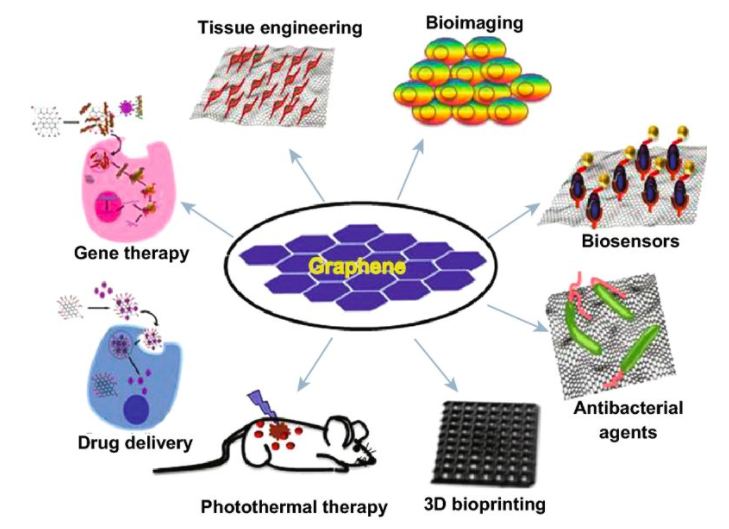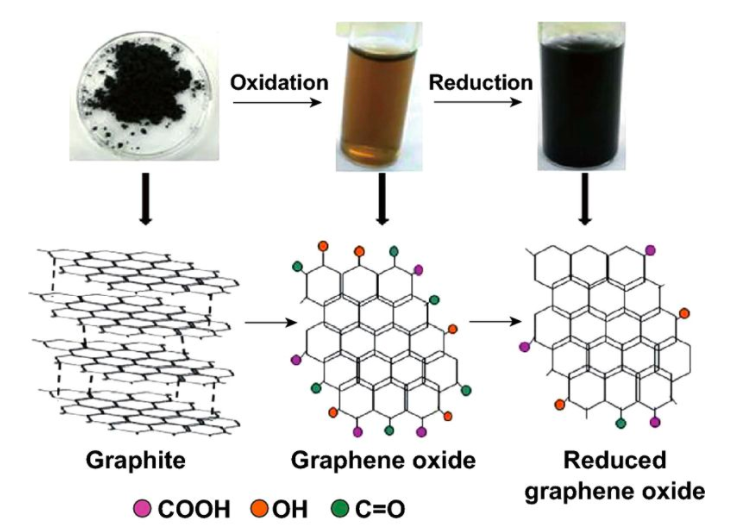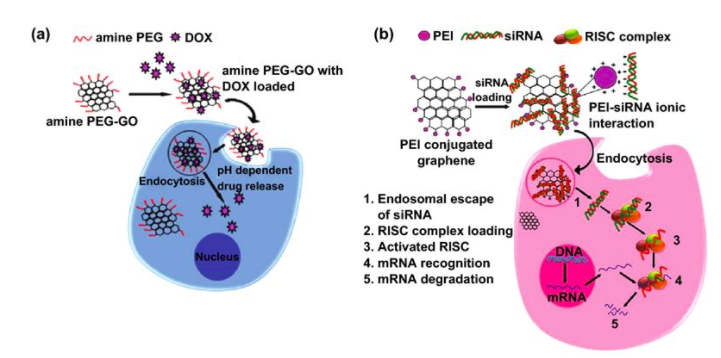While hardware, software, and various design mechanisms are critical to 3D printing , materials science is at the heart of this advanced technology, and this technology continues to permeate today's mainstream. The use of metal and carbon fiber for 3D printing is now particularly popular and has become more affordable and available to everyone, initially limited to industrial companies with more financial resources and research capabilities. Graphene, sometimes referred to as "semi-metal," is touted as a material full of magical ability due to its ultra-light weight and incredible strength - far more than diamonds or even steel. Now, two researchers from India published the results in a paper entitled "Graphite Synthesis: Focus on Biomedical Problems", exploring the use of graphene in 3D printing and the toxicity that can be caused by exposure to cells. Graphene is unique in that it is a 2D structure with incredible strength, rigidity and exciting qualities such as electrical conductivity. When used in biomedical applications, such as creating scaffolds to promote living cell growth or for drug delivery, bioimaging, and even biosensing, there are concerns about their safety. The synthesis of this unique material is carried out by top-down or bottom-up methods using chemical ablation, electrochemical oxidation or plasma treatment, respectively, or stacking up with relatively large graphene sheets. As recently commented by scientists, graphene oxide (GO) is considered to be the most flexible in biomedical applications, used in conjunction with RGO, which is a less oxidized form, both of which have better Water soluble. "Because of the hydrophobicity of graphene, the preparation of stable dispersions remains an unsolved problem," the researchers said. "This can be achieved by sonicating the graphene suspension for several hours and using surfactants or polymers. "" Over time, researchers have begun to study various solvents, but this has increased the possibility of toxicity, which is why there is now a greener, more pure way to make high-quality graphene sheets, such as those High-speed shear mixing technology for graphene. The need for chemicals that may be toxic. Due to the incredible potential of graphene in biomedical applications, it is once again used in drug delivery, including genes and proteins, and as a biosensor, antimicrobial and tissue engineered graphene, and continues to be studied in this field. It is very important. "The overwhelming properties of GO supporting its clinical applications are amphiphilicity, surface functionality, fluorescence quenching ability and surface-enhanced Raman scattering properties. The hydrophobicity, large surface area, corrugation and grain boundaries of graphene defects are considered. Important factors for biomedical use," the research team said. With this research/comment, scientists also realize that 3D printing and graphene are very suitable for each other in a complementary way, and graphene is also dedicated to enhancing polymer materials (especially in biomedical applications), so in this constant Often used in the development of technology: “With the help of 3D printing, a range of biomaterials can be adjusted to achieve the desired characteristics and multiple functions for complex tissue engineering applications, as well as to create structures that are suitable for surgery.†Graphene synthesis However, people are still very concerned about how graphene is mixed with biological structures. The researchers have listed a number of factors that may affect interactions, including: · Cell size and shape ·Horizontal size ·Surface Chemistry · Impurities ·Cohesion "Physical interactions between graphene and cell membranes are thought to be the main mechanisms of graphene-induced toxicity," the researchers said. "The sharp edges of graphene sheets can damage cell membranes and cause leakage of intracellular contents. Both GO and RGO are known to induce cytotoxicity, oxidative stress and DNA damage in mammalian cells." Although researchers have seen the prospects for the application of graphene in many different applications, including in the biomedical industry, scientists and medical professionals have tried to help solve the human toxicity to humans and still have significant major obstacles to overcome. “Europe's emerging and newly discovered scientific committee on health risks has included graphene in the list of hazardous materials. Given the toxic potential of graphene, there are still many gaps to fill. When assessing toxicity, all physical and chemical parameters, including size, should be considered. Shape, agglomeration, layer thickness, lateral dimension and atomic composition. From a biological point of view, the effects of concentration, duration, exposure pathways and impurities should be thoroughly investigated," the authors said. “In short, graphene is expected to provide an exciting nanoplatform for biomedical applications, but there are still many issues to address. It is recommended that graphene derivatives be subjected to extensive safety assessment or validation prior to biomedical applications or clinical applications. †[Image/Source: SpringerLink] Drug and gene delivery applications a) Functionalized GO delivery of doxorubicin using amine PEG. b) sirna delivery and mRNA degradation using pei-coordedgo-for gene silencing technology (RISC-RNA-induced silencing complex) China Poly Zip Envelopes, PP Zip Bag supplier & manufacturer, offer low price, high quality plastic envelope with zipper,expandable envelope with zipper etc. plastic envelope with zipper,Clear Plastic Envelopes with Zipper,envelope bag with zipper,poly envelopes with zipper,Poly Zip Envelopes MIFIA INDUSTRIAL CO., LTD., , https://www.stationery-manufacturer.com

